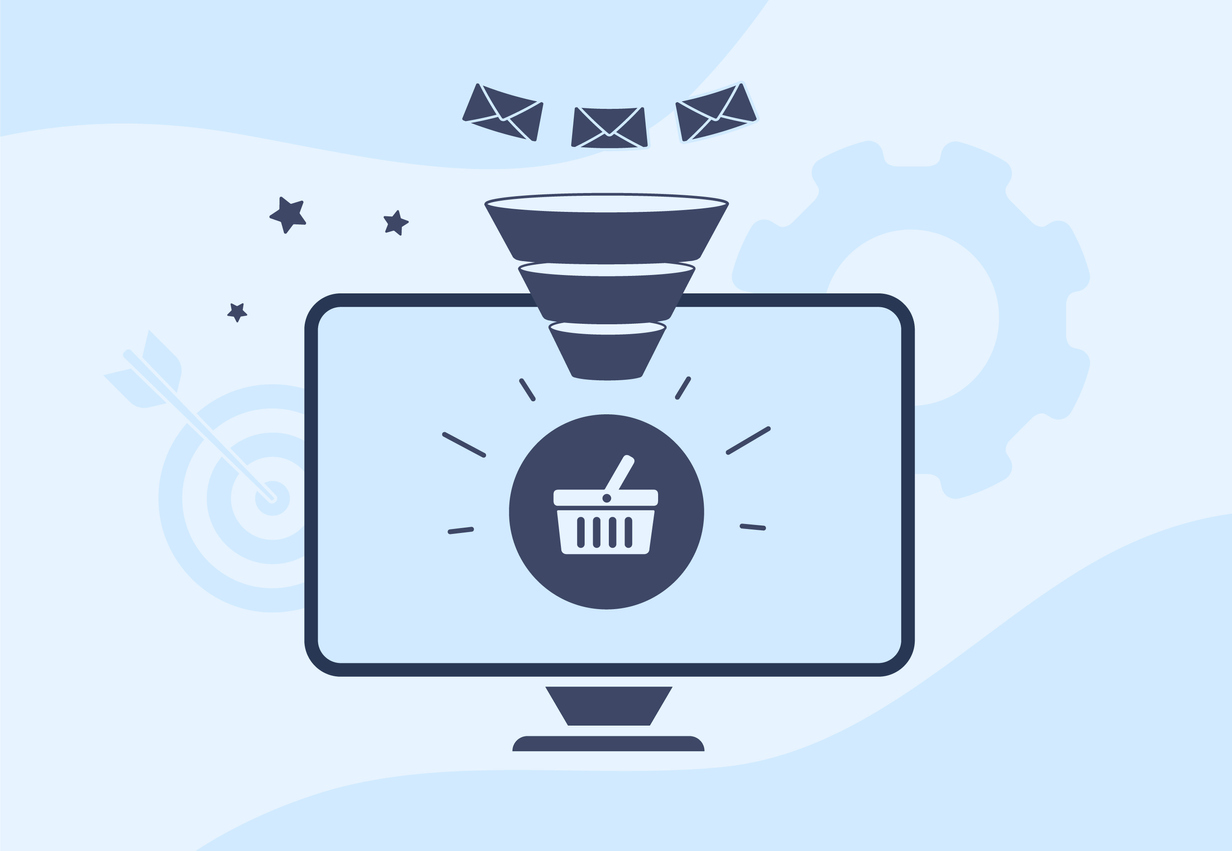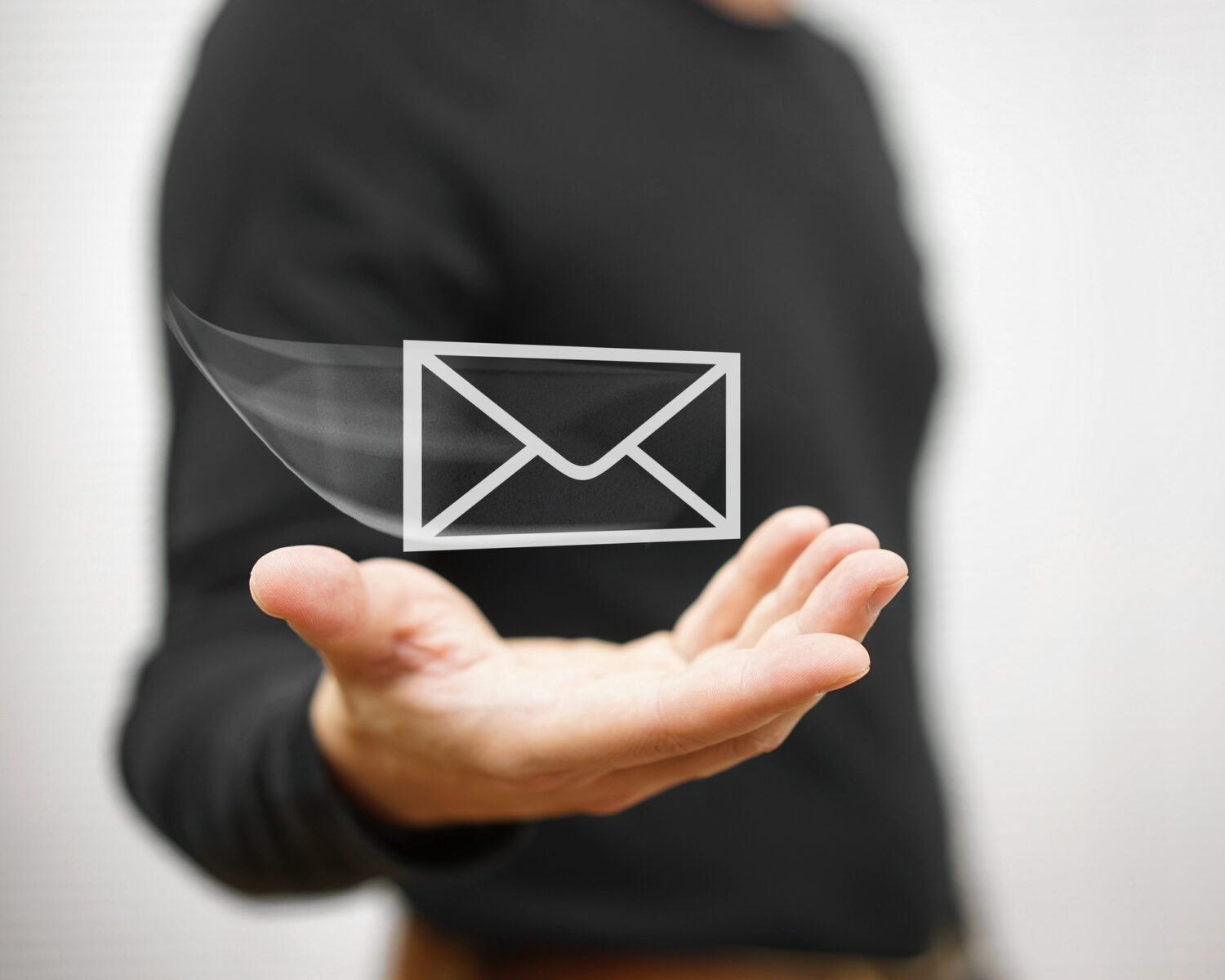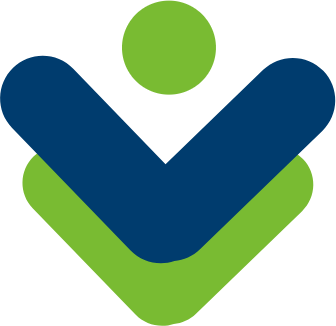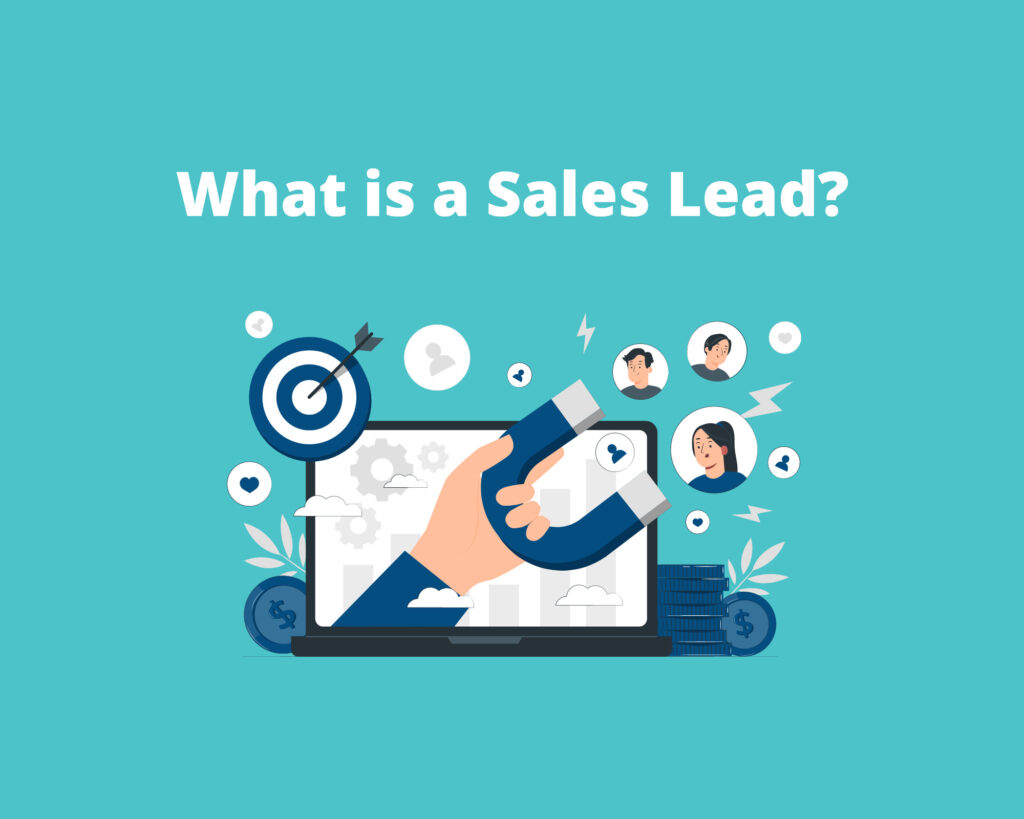
Lead Generation: A Beginner’s Guide | Visual Visitor
Learn how to fine-tune your strategy and generate better leads
Understanding online lead generation has become critical for B2B business growth. To understand how this works, we must begin by going over both what is a lead and what is online lead generation.
Don’t worry, this doesn’t have to be as overwhelming a process as many might fear. In Visual Visitor’s detailed beginner’s guide, we break down the different stages to help you to build a strategy that can be implemented one step at a time. The goal, help you generate more quality leads today!

What is a Lead?
To be very simple, in sales and marketing, a lead is often considered an individual or organization that has an interest in what you are selling.
Most businesses will label a contact a lead after they have opened communication with them, either from a subscription, a blog, a free trial, etc. Cold calling based on a purchased list of contact data is another method of adding leads to the list.
We’ve all been there, You sign up for a trial or you fill out one of those online surveys to learn more about a product, and the next thing you know, you’re getting texts, calls, and emails. As the lead, it can be a bit intrusive, but as the business, it is very nice to know that the person that you are contacting has shown some level of interest in the product or service that you are offering.
But not all leads are created equal. Based on the qualification methods and the way that the leads were collected, the leads can fall into different categories.
MQLs or Market Qualified Leads
This is a lead that has shown interest in what your business is offering based on current marketing efforts. They might not be ready for that first sales call, but this type of lead has a good chance of becoming a customer.
SQLs or Sales Qualified Leads
This is a prospective customer that has moved through the sales pipeline, from MQL (market qualified lead) through to a SQL (sales qualified lead), and are now ready for the sales team to work on converting them to an active customer.
Service Qualified Lead (also knowns as SQL)
This lead consists of contacts or customers who have mentioned to their customer service rep that they are interested in learning more about becoming a paying customer or adding new products or services to their account.
PQLs or Product Qualified Lead
These are individuals and businesses that have experienced the value of using your product or service and indicated they are interested in becoming paying customers. You will mainly find PQLs in companies that offer a free trial or a limited version of their product. The use of the product takes this lead a step further than the MQLs mentioned above.
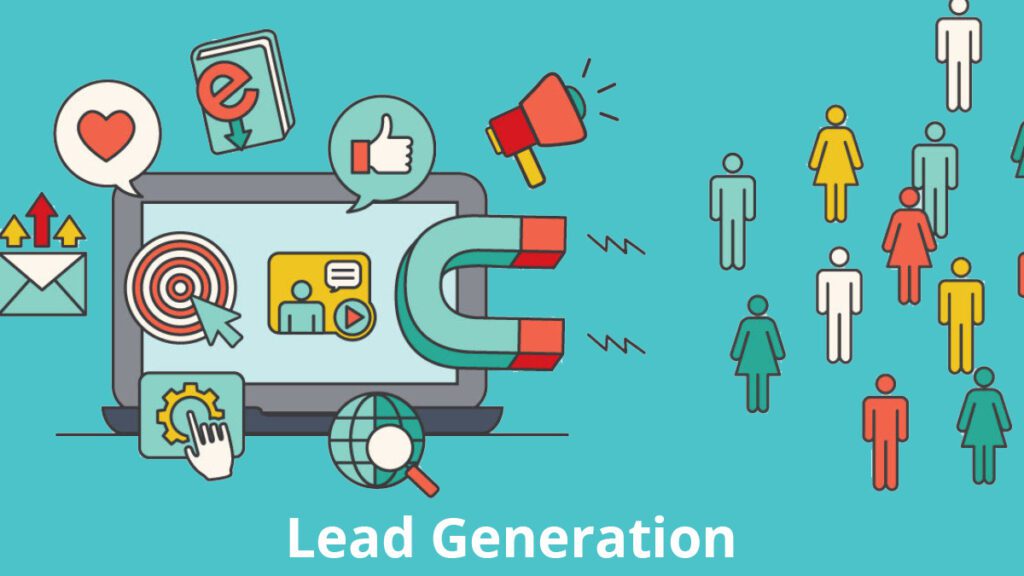
Lead generation is the process of stimulating and capturing interest in your product or service and increasing that interest through nurturing. This is done for the purpose of developing a sales pipeline. It will allow businesses to nurture those targets until they are ready to become customers. Examples of lead generation are blog posts, email campaigns, online content, white papers, and coupons.
Most don’t realize that when lead generation is done right, it is the first step to building a prosperous relationship with a prospective customer.
Why do we need Lead Generation?
Generating leads is a fundamental part of the buyer’s journey to becoming a customer. Why?
Sales Cycle.
Do you realize that most B2B sales will take over a month to close? What this means to you, is capturing that prospect’s information early in the process will give you that much more time to work with it.
No longer is it necessary to guess who those inbound leads are, you do not need to wait until you get them to fill out a form or sign up for a free trial online. You can gather the information that you need right from your anonymous visitor with a website visitor tracking tool like Visual Visitor.
The Lead Generation Funnel
The lead generation funnel has been developed by marketers as a systematic approach to generating potential customers. Think of it as a process of funneling your leads through distinct stages until they decide to make a purchase. This funnel was developed so that marketers can visualize the whole process and learn to manipulate it.
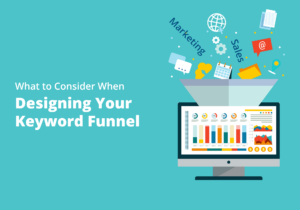
All business do their research, their shopping, and their buying differently. There is a process that they all go through before making a decision – which is why it is so important for your company to have a structured approach to sales.
The best way to start creating this structure is to identify your lead generation funnel; the stages and the roles that those different groups will play. Also, the triggers that indicate a lead is ready to advance to the next stage of the funnel.
Your lead generation funnel is your roadmap to turn leads into sales.
This process is represented as a funnel because, at each stage of the process, fewer will meet the criteria set to move to the next phase of the process.
Walking Through Your Funnel
Creating your Lead Generation Funnel is a process that must be understood and would take more than this post to go through effectively. We will walk you through the steps that make up the process to get you started. This will help you understand the importance of lead generation and how the funnel is tied to that.
- The Attract Phase. A visitor discovers your business through some form of marketing. This could be your website, your blog, or social media. This part of the funnel should focus on attracting a wide variety of visitors and potential customers. In this stage, you are building awareness of your product or service without focusing too much on the sale.
Content is a big driver of the Attract Phase and there are different marketing tactics that you can use to get those leads here.- Blogs
- Social Media
- White Papers
- Videos
From these content drivers, you are providing some sort of value to the lead that will enable you to create a connection and build on that in the future.
- The Convert & Engage Phase. Now your visitor is ready to become a lead – this is different than a qualified lead. They have clicked on some call-to-action (CTA) that requires them to give you some personal information. This could be a newsletter, ebook, more in-depth white paper, or a free trial. If your attract phase was done effectively, this is an easy step for the visitor to make. You already established some trust or confidence in the previous step so they are feeling more comfortable sharing their information with you.
- It’s Time to Sell. Now you have moved those leads down to the bottom of your lead generation funnel and they are a prospect. You have provided them with the information that they need to consider your product or service as a solution to their problem and it is time to sell. The content that you have in this phase is all geared toward a sale. This can include:
- Demos with your qualified sales and/or service reps
- Case studies that show how effective your solution is to solve their problems
- Reviews of satisfied customers who have implemented your solution
Understanding the content that each stage of the lead generation process requires is fundamental to increasing your leads. Providing Phase 2 content during Phase 1 can quickly scare off those leads just as easily as not providing the right closing content can. Many businesses feel they can skip this step and “wing it,” which might work. But to have a solid lead generation process, you must take the time to define and nurture according to your company’s unique needs.
It’s Time to Generate Leads
Once you have put your strategy together, it is time to drive traffic to your landing page and begin generating some leads! Here we go:
1. Define your Buyer.
Content is particularly important in the entire lead generation process. You must understand your potential buyer so that you can provide effective content to move them through your lead generation funnel. When defining your buyer, you must figure out what needs buyers have that your product or service can meet. Next, you focus your content on the many ways that your product or service can help. By doing this, you will have begun to create a foundation that you can more easily build on as this lead moves through the process.
How do you do this?
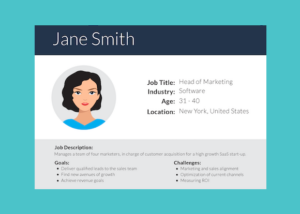
Buyer Personas. A buyer persona is a fictional representation of the ideal client. The goal when creating these personas (yes, there should be more than one), is to identify some characteristics that your buyers have in common. You can get this data either quantitatively from the demographics of your current customers, or qualitatively based on shared challenges and different ways that past and present customers describe their problems.
2. Create content.
Now that you have defined your buyer and created some outlines defining them, it’s time to create some content. Remember, when you are creating content, you need to do so not only for each phase of your funnel but also for each persona that you developed.
3. Attract your audience.
In this phase, you will provide your audience with content intended to guide those leads to a landing page. This will typically include content that provides these leads with free and useful information. Including CTAs within this content will also be helpful to progress them to the next phase of your funnel.
4. Engage your audience.
You have created your content, you have attracted various leads, now it is time to engage those leads and create a connection to help lead them through your funnel. This would be the content that really speaks to their needs and makes them feel like your solution might be the one they are looking for. In-depth articles, free trials, and the promise of a personal demonstration are ways to filter leads that are a fit, from ones that are just browsing and not likely to convert.
5. Capture their information.
When you have engaged your audience, capturing their information via a form or newsletter is a very good indicator that you have a viable lead.
6. Qualify those leads!
Finally, you have their information. They are ready to be considered qualified and move to the sales team. Putting in the extra time during lead generation to build that relationship, make these qualified leads that much more likely to move on to become customers.
Lead Generation Marketing Techniques
Once you have designed your lead generation funnel, defined your buyer, and written your content, it is time to time to set up your various channels to drive traffic to your website or landing page to reach your audience and start generating leads.
How? What channels should you use?
SEO – Search Engine Optimization
What is SEO and how does it work? SEO is the process of optimizing your online content in order to make it rank higher when search engines display search results. This method of receiving visitors organically is especially important for lead generation. When done right, getting your articles, posts, pages ranked high for relevant searches can drive a sustained flow of traffic to your site – for free!
Keywords
The first step in SEO is to define a set of keywords. These keywords will go beyond just the basic words to describe your product or service but to include words that represent searches people will use to find the content you will use to drive traffic. Keyword ranking is a bit complex, but there are services out there to help you like Google Keyword Planner.
Content
I know you are probably sick of hearing about content, but it is a great way to guide potential leads to a landing page. This content should not only contain keywords that you have researched and feel like you will be able to rank high enough to get results but also be relevant to the lead that you are looking for. Ranking for keywords and driving traffic to your site for topics that do not relate to your product or service will do you no good. Also, before you post, optimize. You can use a paid service such as Moz to provide optimization and a list of items to improve in order for your content to rank higher faster.
Facebook originally allowed companies to use outbound links in the posts to direct leads to their websites, but as FB has grown, they have begun to favor accounts that use paid advertising. Now Facebook also has a feature that lets you use a simplified version of a CTA button on the top of your page to direct visitors to your website through their interface.
LinkedIn from an advertising standpoint has been increasing as a B2B platform for lead generation. From this platform, you can reach actual decision-makers a bit easier. Their user data makes it easier for you to target the different defined buyers you have outlined in your lead generation funnel. With an in-depth campaign objective outlined through LinkedIn, you can see why this would be a popular option for B2B lead generation.
PPC
Ads that are on search engine result pages (SERPs) are pay-per-click ads. Google, as a leader in search engines, is where most are looking to see results for their lead generation. PPC is a system that allows you to advertise on Google (or other search engines) and get your message out to the specific audience that you are trying to generate leads from.
Lead Generation Tools
Using the right lead generation tools can be difficult. The most successful marketing teams are using some system to organize and store their leads. They store information that will help the team decide how to proceed with those specific leads. Things like email addresses, pages visited, time on page, how much clicking do they have to do to get to an answer, what are their movements both before and after clicking on a conversion form?
If you can’t answer these questions, it will make connecting with those leads a lot harder. That’s where a tool like Visual Visitor comes in handy.
Lead Capture
Visual Visitor includes a feature that does a lead capture, which will collect the data from the forms on your website and add those contacts to your existing contact database. That way when a lead fills out a form, the data is automatically collected and added to the list of leads that you are watching. You will also be able to add that contact information directly to your CRM through the software. No more collecting the data and then manually having to input it into another system and cross-reference.
In addition to the lead capture, Visual Visitor also has a form scraping tool that collects the information from the existing forms on your website. Using Visual Visitor allows you to consolidate all of the leads into your contact database, regardless of which form on your website they complete. Visual Visitor also has a Form Generation tool that walks the user through creating and embedding the form on their site.
Website Visitor Identification
This tool makes it possible to identify those visitors that don’t fill out a lead capture form. With Visual Visitor’s website visitor identification, you can see the businesses that are visiting and have visited. The information they provide includes contact information for employees, industry, location, size, and so much more. The leads that are provided with website visitor identification have already shown intent, making them that much closer to qualified.
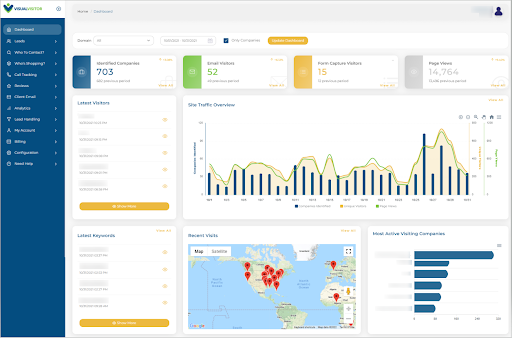
Visual Visitor’s platform allows you to filter leads by page visited, showing who is spending the most time on certain landing pages. This type of information provides your sales team with a list of leads, their company information, and contact information, to move forward.
Visual Visitor also sends out instant alerts when hot leads visit your site, so you can see immediately that group of companies that are looking at your product. No more waiting hours for your information to be updated.
Those leads that are just beginning their journey into your product or service can easily be added to their appropriate group within your CRM for nurturing or further monitoring before labeling them qualified.
Conclusion
Now you have the foundation to start building a solid lead generation strategy for your business. The process can seem overwhelming, but lead generation is a must for every B2B sales and marketing team out there. From understanding what makes a lead a lead, the different types of leads, developing your lead generation funnel, creating phase-specific content, and lead generation tools like Visual Visitor – we have touched on them all. But this is just the beginning…
This ongoing process will require constant monitoring and tweaking to stay relevant. Test often. The more you adapt to the ever-changing environment of lead generation, the more you will improve your lead quality and increase your sales.


